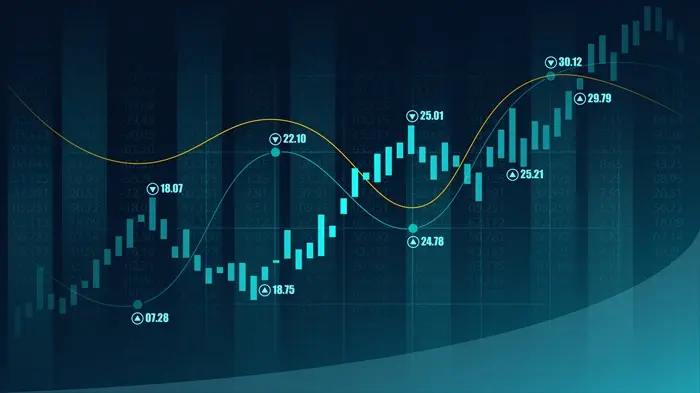The Australian Dollar (AUD) is one of the most traded currencies in the world. As a commodity currency, it is influenced by factors such as global demand for Australian goods and services, interest rates, and economic conditions. Understanding the historical highs and lows of the AUD provides insight into how the currency has evolved and how external factors influence its value.
This article will explore the highest the Australian Dollar (AUD) has ever been, the key factors driving the rise in its value, and the broader implications of such a surge for the Australian economy and global markets.
Understanding the Australian Dollar (AUD)
The Australian Dollar is the official currency of Australia and is represented by the currency code AUD. It is one of the major currencies in the world, often traded against the US Dollar (USD) in global financial markets. The Australian Dollar is also a popular currency in the forex market due to Australia’s status as a major exporter of commodities like coal, iron ore, and natural gas.
The AUD’s value fluctuates based on several factors, including changes in interest rates, trade balances, global commodity prices, and investor sentiment. As a resource-driven currency, it tends to benefit from periods of high demand for commodities, which drive the Australian economy and, by extension, the value of the AUD.
Historical Highs of the Australian Dollar
The value of the Australian Dollar has varied considerably over the years due to a range of economic and global factors. The highest the Australian Dollar has ever been was in 2011, when it briefly reached parity with the US Dollar (1 AUD = 1 USD). This marked a significant milestone in the currency’s history and was driven by various factors, which we will explore in the next section.
The 2011 Surge
In 2011, the Australian Dollar experienced a significant surge, briefly reaching parity with the US Dollar. For a currency that had historically traded below the value of the USD, this was a major achievement. The Australian Dollar’s rise to parity was driven by several key factors:
Commodity Prices: During this period, global demand for commodities like iron ore, coal, and natural gas was at a peak, with China being a major buyer of Australian exports. As the demand for these commodities rose, so did the value of the Australian Dollar.
Interest Rates: The Reserve Bank of Australia (RBA) had higher interest rates compared to many other developed countries, including the United States. This attracted foreign capital into the Australian economy, as investors sought higher returns on their investments, further strengthening the AUD.
Global Economic Conditions: The global economic landscape also played a role. During this period, the US economy was recovering from the effects of the 2008 financial crisis, and the Federal Reserve maintained low interest rates, which put downward pressure on the US Dollar. As a result, the AUD appreciated as investors looked for higher-yielding currencies.
Strong Economic Performance: Australia’s relatively strong economic performance, driven by its resource-rich economy, also contributed to the AUD’s strength. The country’s low unemployment rate and relatively low public debt made it an attractive destination for investment.
Although the Australian Dollar briefly reached parity with the US Dollar in 2011, this level was not sustained. The AUD continued to fluctuate due to global market conditions and changes in commodity prices. However, the 2011 surge remains a key moment in the history of the Australian Dollar.
The Impact of Commodity Prices
The Australian Dollar has long been influenced by the prices of commodities, as Australia is a major exporter of natural resources. The global demand for commodities like iron ore, coal, gold, and natural gas has a direct impact on the value of the AUD. When commodity prices are high, the Australian economy benefits, and the AUD tends to appreciate. Conversely, when commodity prices fall, the Australian Dollar may depreciate.
The period around 2011 saw record-high prices for many Australian exports, particularly iron ore. This provided a major boost to the Australian economy and, by extension, the Australian Dollar. The link between commodity prices and the AUD is a key factor in understanding the currency’s historical highs.
Factors That Affect the Value of the Australian Dollar
To understand how the Australian Dollar reached its highest point and what might influence its future value, it’s important to examine the key factors that affect the AUD’s exchange rate.
1. Commodity Prices
Australia’s economy is highly reliant on the export of raw materials, and this makes the AUD particularly sensitive to fluctuations in commodity prices. When global demand for Australian exports is strong, the AUD tends to rise in value. Conversely, when global commodity prices drop, the Australian Dollar often weakens.
For instance, during periods of high demand for iron ore and coal, such as during the 2000s and early 2010s, the Australian Dollar saw significant appreciation. However, a decline in commodity prices—such as the downturn in the mining sector after 2014—can lead to depreciation in the value of the AUD.
2. Interest Rates and Monetary Policy
The Reserve Bank of Australia (RBA) plays a central role in determining the value of the AUD through its monetary policy. Interest rates set by the RBA can influence investor behavior. When the RBA raises interest rates, it can make the Australian Dollar more attractive to foreign investors, increasing demand for the currency and driving its value higher.
Conversely, when the RBA lowers interest rates, it may result in a weaker AUD, as lower rates reduce the returns available to investors. The interest rate differential between the RBA and other central banks, especially the US Federal Reserve, is a key factor in the currency’s value.
3. Global Economic Conditions
The overall health of the global economy also impacts the AUD. For example, during periods of global growth and strong demand for commodities, the Australian Dollar tends to appreciate. Conversely, during periods of global economic downturns, such as the 2008 financial crisis, the AUD can weaken as investors seek safe-haven currencies like the US Dollar.
Geopolitical events and global financial crises also play a role. For instance, during times of uncertainty, the US Dollar often strengthens as investors move their money into assets perceived as safe havens, which can lead to a decline in the AUD.
4. Trade Balance and Current Account
Australia’s trade balance is another critical factor in the value of the AUD. A positive trade balance—where Australia exports more than it imports—supports the demand for Australian Dollars and tends to increase the currency’s value. On the other hand, a trade deficit, where imports exceed exports, can exert downward pressure on the AUD.
The current account balance, which takes into account factors such as investment income, is also relevant. A surplus in the current account, driven by strong exports or inflows from foreign investments, typically strengthens the AUD. A deficit can weaken the currency.
5. Investor Sentiment
Investor sentiment and global risk appetite are important in determining the strength of the AUD. When global investors are confident in the economic outlook of Australia, they are more likely to invest in Australian assets, driving up demand for the Australian Dollar. Conversely, during times of uncertainty or risk aversion, the AUD can fall as investors move their capital to safer currencies, such as the US Dollar or Japanese Yen.
The Impact of a Strong Australian Dollar
A strong Australian Dollar has both positive and negative effects on the Australian economy. While a higher AUD can benefit consumers by making imported goods and travel abroad cheaper, it can also hurt exporters. For businesses in the export sector, a stronger AUD means that their goods become more expensive for foreign buyers, which can reduce demand for Australian exports.
Additionally, a strong Australian Dollar can affect tourism, as international tourists may find Australia more expensive to visit. On the other hand, Australians traveling abroad can benefit from a stronger AUD, as their purchasing power increases when spending in foreign currencies.
The Future of the Australian Dollar
The Australian Dollar’s future trajectory is difficult to predict, as it will depend on various factors, including global economic conditions, commodity prices, and interest rate decisions made by the RBA and other central banks. While the AUD is unlikely to reach the highs seen in 2011 without a similar global economic backdrop, the currency remains an important player in global financial markets.
Investors and businesses should continue to monitor these factors closely to understand how the AUD might behave in the coming years. The impact of global trade tensions, changes in commodity prices, and monetary policy decisions will continue to influence the value of the Australian Dollar.
Conclusion
The Australian Dollar has reached significant highs throughout its history, with the most notable peak occurring in 2011 when it reached parity with the US Dollar. This achievement was driven by factors such as high commodity prices, strong economic performance, and relatively higher interest rates. Understanding the factors that influence the value of the AUD—such as commodity prices, interest rates, global economic conditions, and investor sentiment—can help explain why the currency reaches certain levels and how it might perform in the future.
While the AUD may not reach the same highs seen in 2011 in the near future, it remains an important global currency influenced by a complex set of factors. Investors, businesses, and individuals dealing with the Australian Dollar should stay informed about these drivers to make well-informed financial decisions.
Related topics:


































